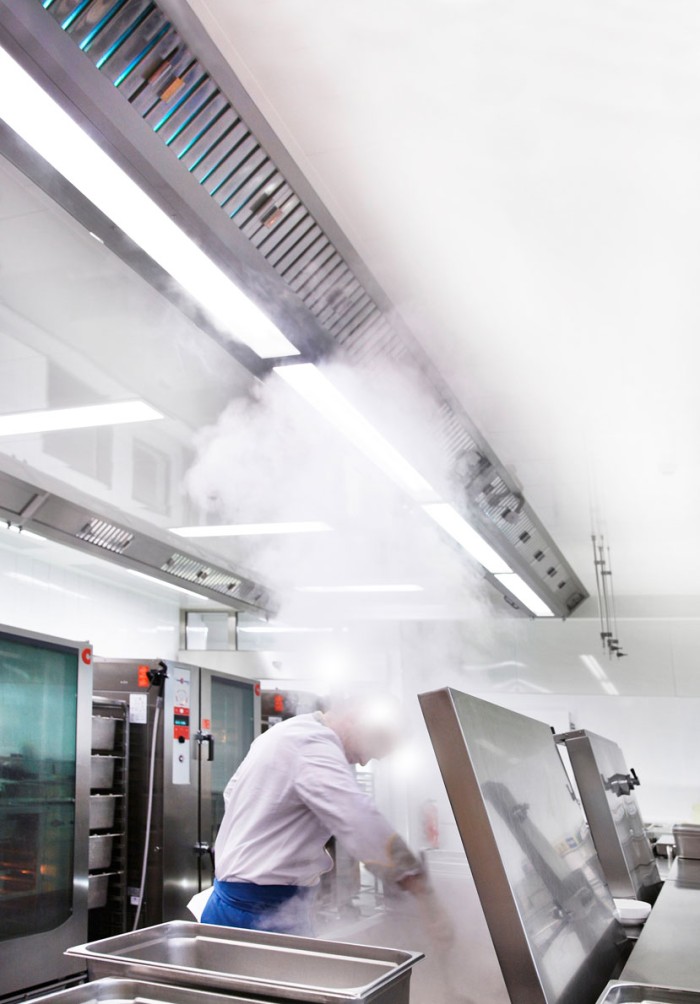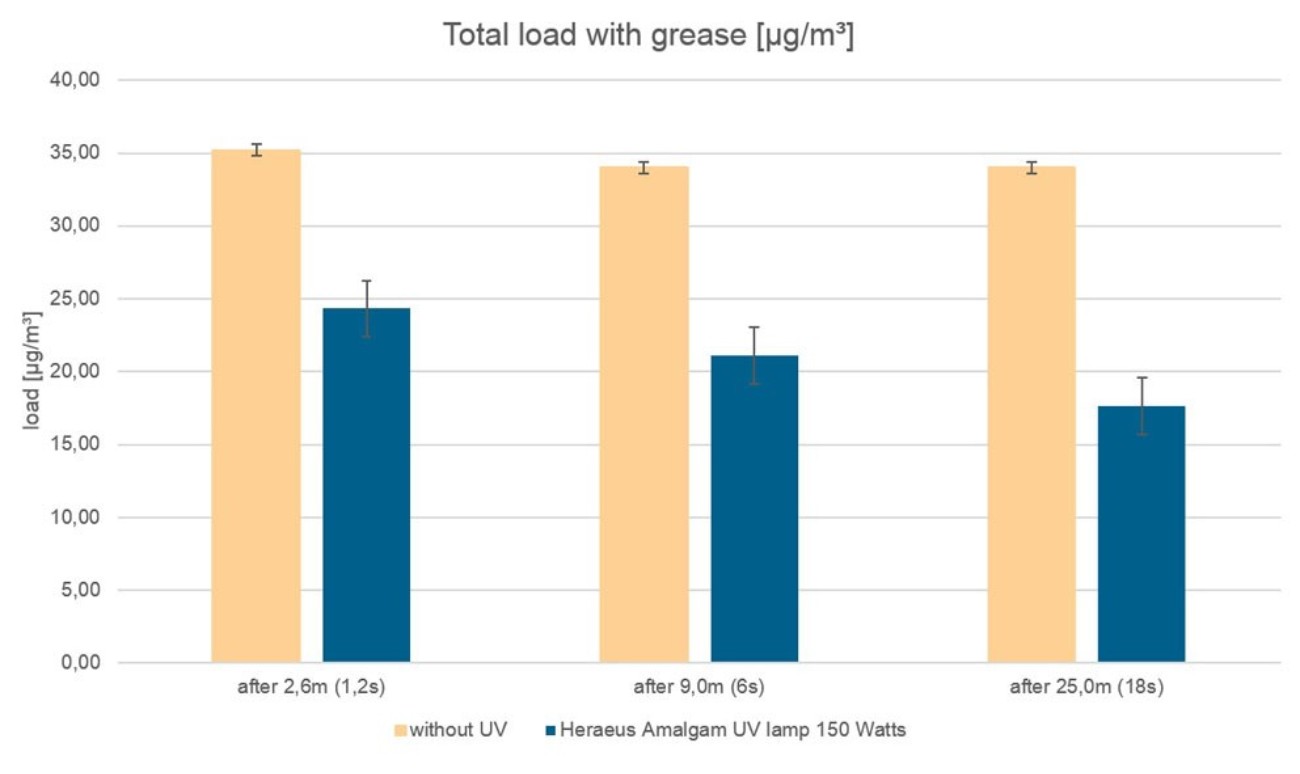Special UV light defies kitchen fumes
Especially in large commercial kitchens, the use of fat and oil causes unpleasant smells and thick deposits in exhaust air hoods and extraction ducts. Grease separators in the kitchen hood can catch just 80 to 85 percent of the greases in the exhaust air. This means that some 20 percent of the grease leave the filter without treatment, causing a stinking, unhygienic and combustible film.
UV technology is already being used successfully to treat kitchen exhausts. High-energy UV photons are able to break up undesirable compounds by means of photo-decomposition and separate them into harmless components. Vacuum UV radiation with a wavelength of 185 nanometres, that is very short-wave and high-energy light, destroys long-chain molecules by means of direct photolysis. Greases and smells in extractor hoods are decomposed, the surfaces inside the hood are kept clean and the cleaning of the air duct is substantially facilitated.
Reasonable and intelligent use of UV light
The high energy of the UV light destroys the DNA of bacteria, rendering them harmless. To also destroy fat molecules, the photons must trigger a chemical reaction (oxidation). Correct adjustment of the UV dose to the environment is decisive for success.
Customary UV low-pressure lamps have not enough power and are designed for temperatures in the range of 20°C to 40°C, but the vapours caused by cooking are much hotter and contain lots of grease. The efficiency of short-wave UV light is clearly lower at higher temperatures. Greases and smells are hardly decomposed. Grease settles on the UV lamps so much that they cannot emit their light. The oxidation process can be improved only by additional and laborious cleaning of the UV lamps. Often, the lamps need to be replaced although they are not anywhere near the end of their service lives. The maintenance expenditure associated with this and unnecessary costs can be avoided. Heraeus Noblelight has used special technologies to substantially improve the performance of its vacuum UV lamps. On the one hand, a special long-life coating in the lamp tube extends the useful life time by up to 10,000 hours. On the other, the special UV amalgam lamps operate efficiently and reliably also at higher ambient temperatures of up to 80°C. This counteracts the greasing of the UV lamps, so they can lastingly keep the extractor hoods clean.
"Blue" and "blue" are not equal
These lamps do not look different from conventional lamps, but their effects are clearly different. This is also confirmed by Südluft Systemtechnik GmbH & Co. KG, a company that has tested the new Heraeus UV technologies. "In a joint project with Heraeus, we have examined the greasy kitchen air in a kitchen hood and a ventilation system," explains Dr. Raytcho Velev, Technical Manager at Südluft Systemtechnik. The trials with the new lamp technology have shown that 80 to 85 percent of the grease particles were caught by the grease filters installed, also at high ambient temperatures.
The UV lamp converted the grease that passed the filter into immeasurably small particles and prevented deposits almost entirely. "We were able to reduce the total amount of measurable grease particles in the exhaust air by 92 to 94 percent," Velev says gladly.
Robust lamp technology used efficiently
Ambient temperature and air flow play just a minor part when the special lamps are used because the amalgam technology is robust. Used purposefully, these UV lamps are more efficient than conventional UV light solutions. Tests in the laboratory and in the field have shown that exhaust air ducts remain free from grease and less of these UV lamps are required to decompose greases and smells especially at high temperatures. This makes the method a cost-effective alternative to conventional processes. It reduces the number of UV lamps to be purchased and the expenditure for cleaning.
The Heraeus UV solution comes with an intelligent control and sensor system. It facilitates the handling of the UV lamp and protects staff.




